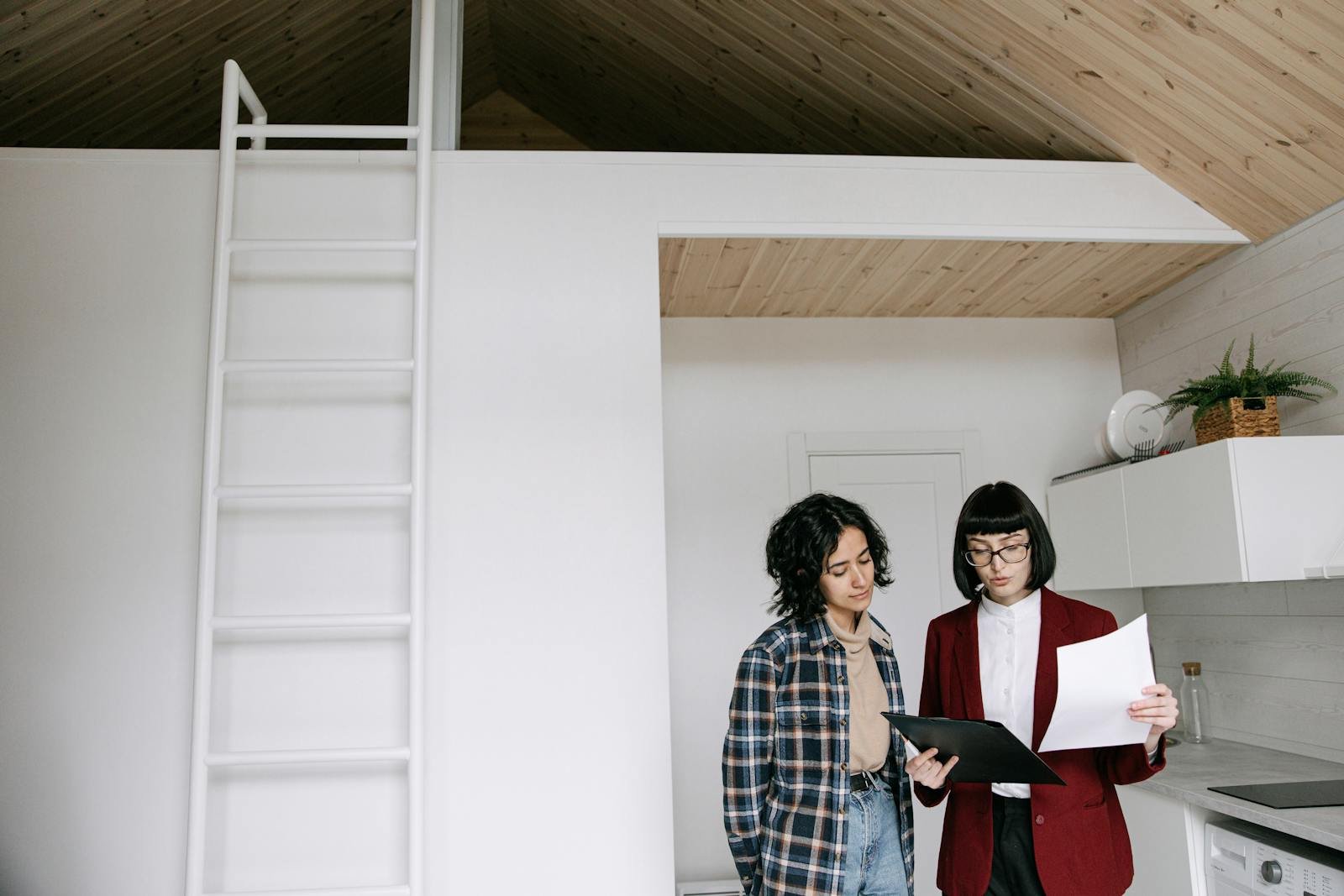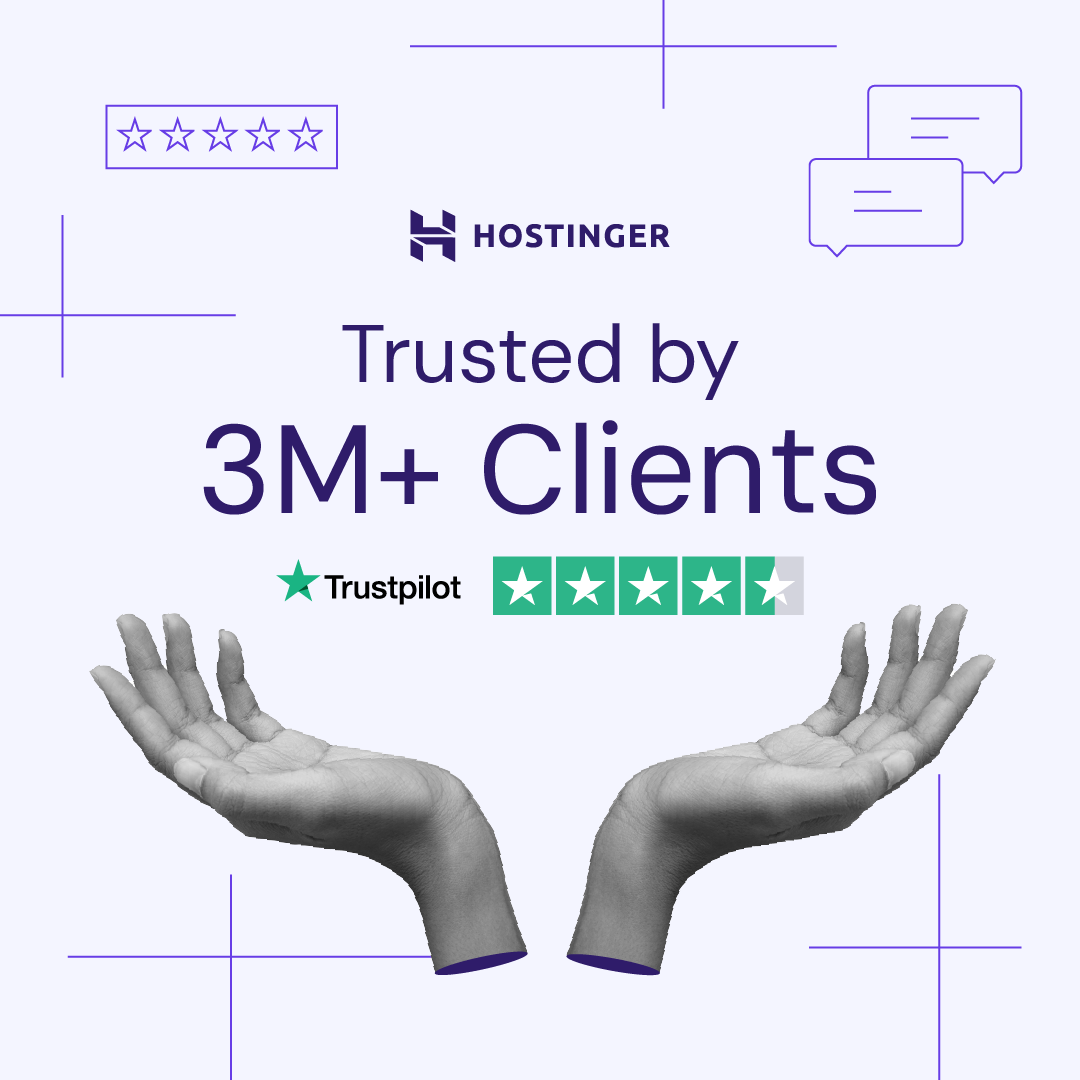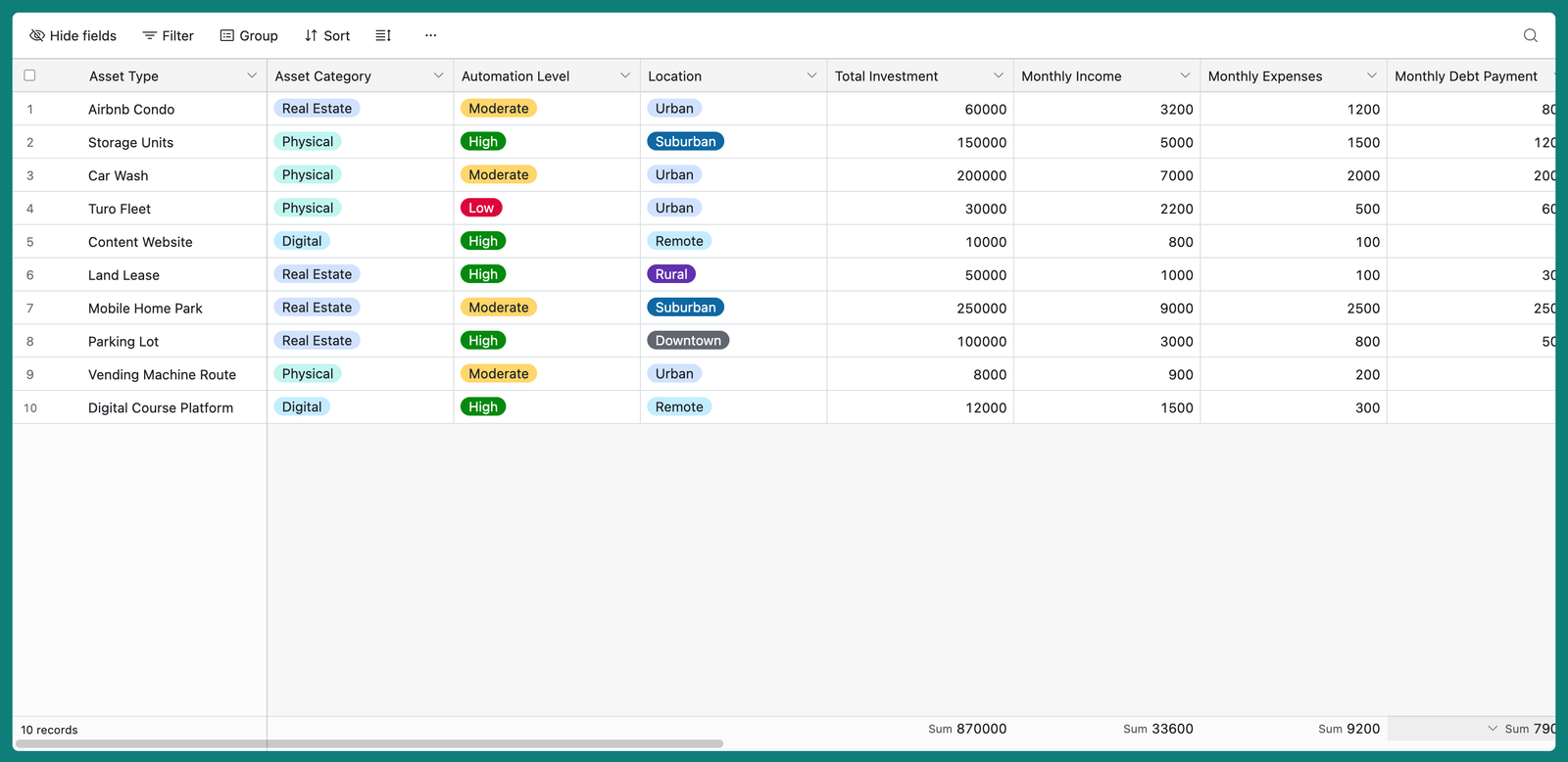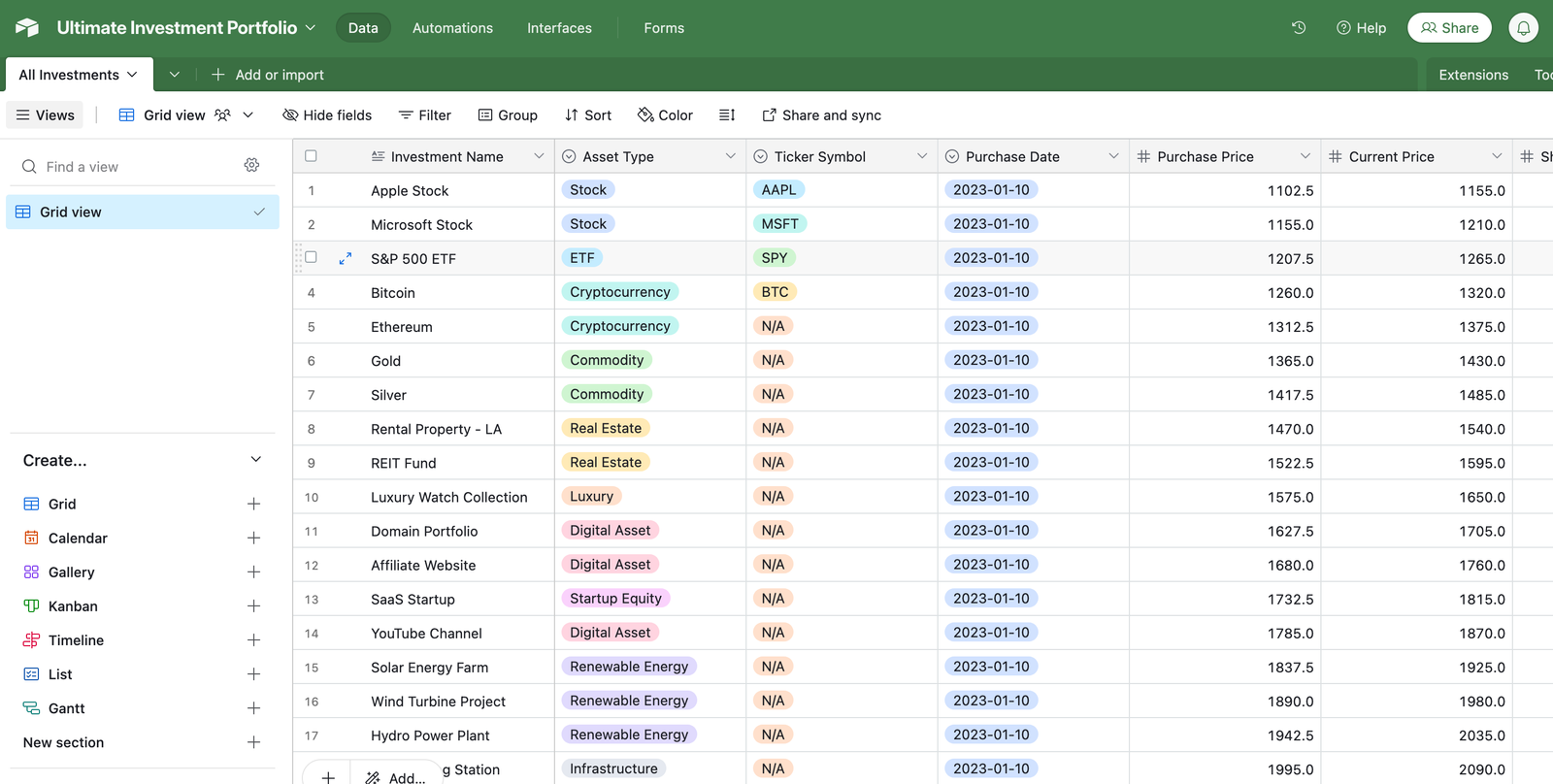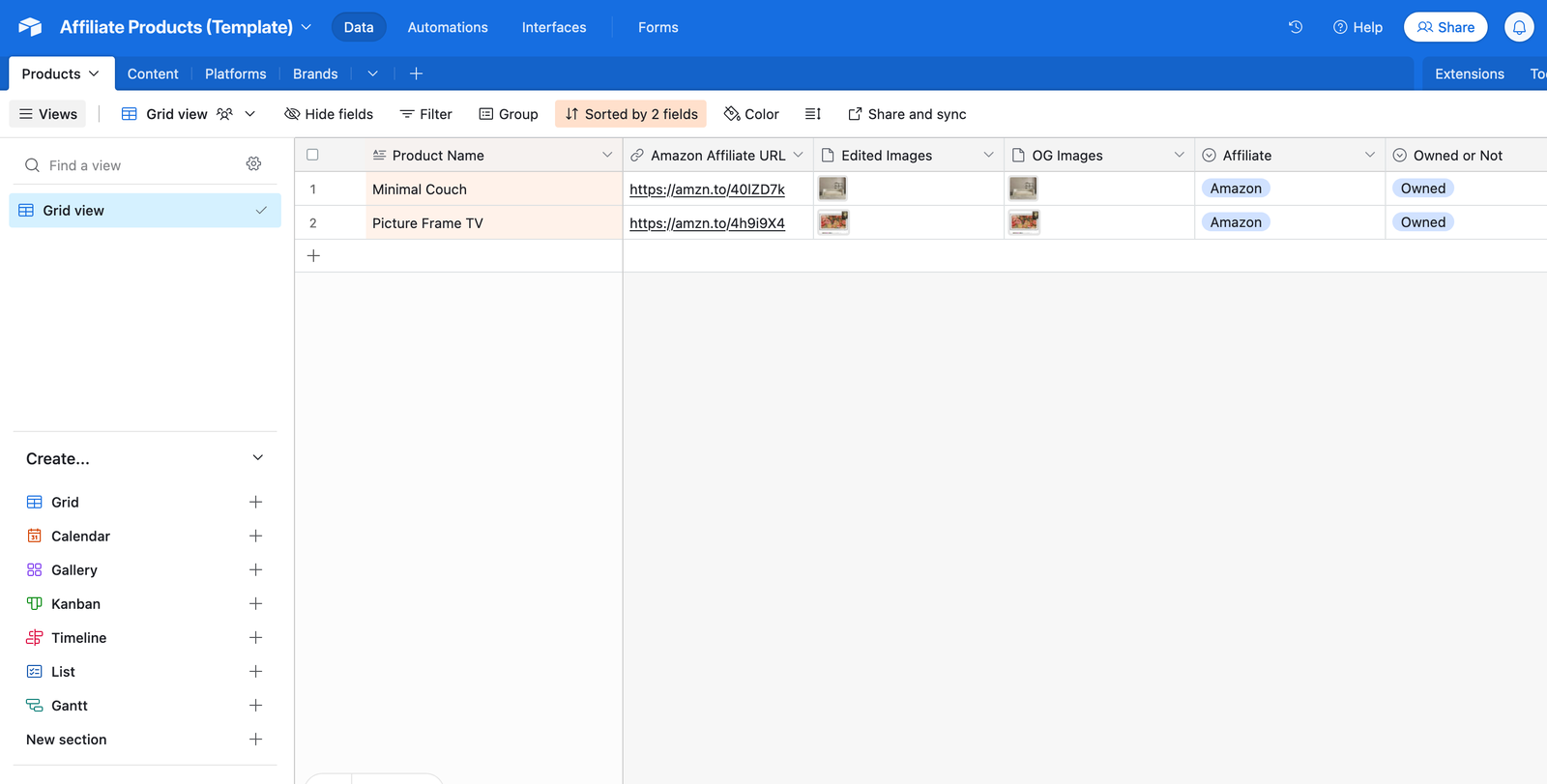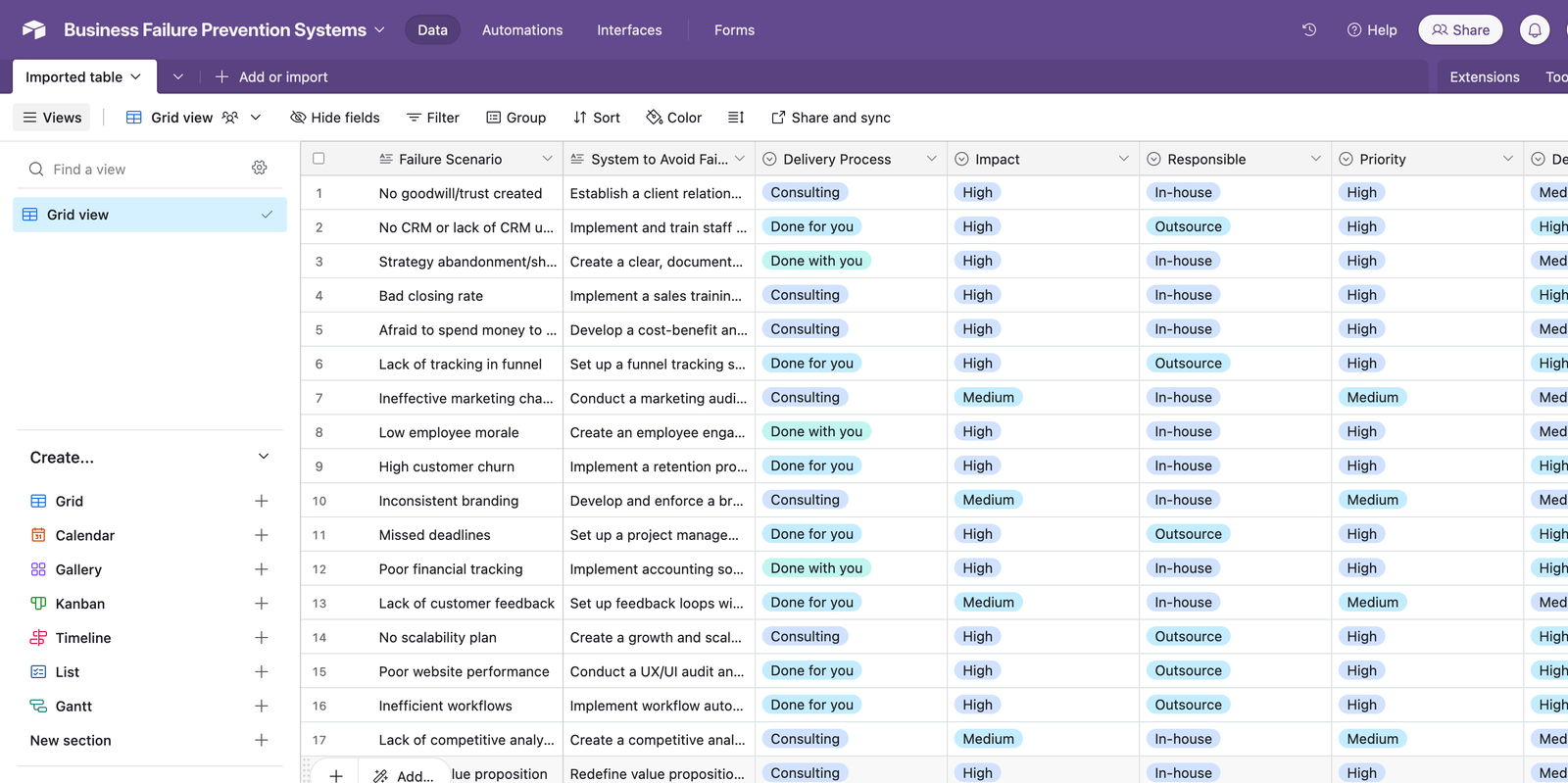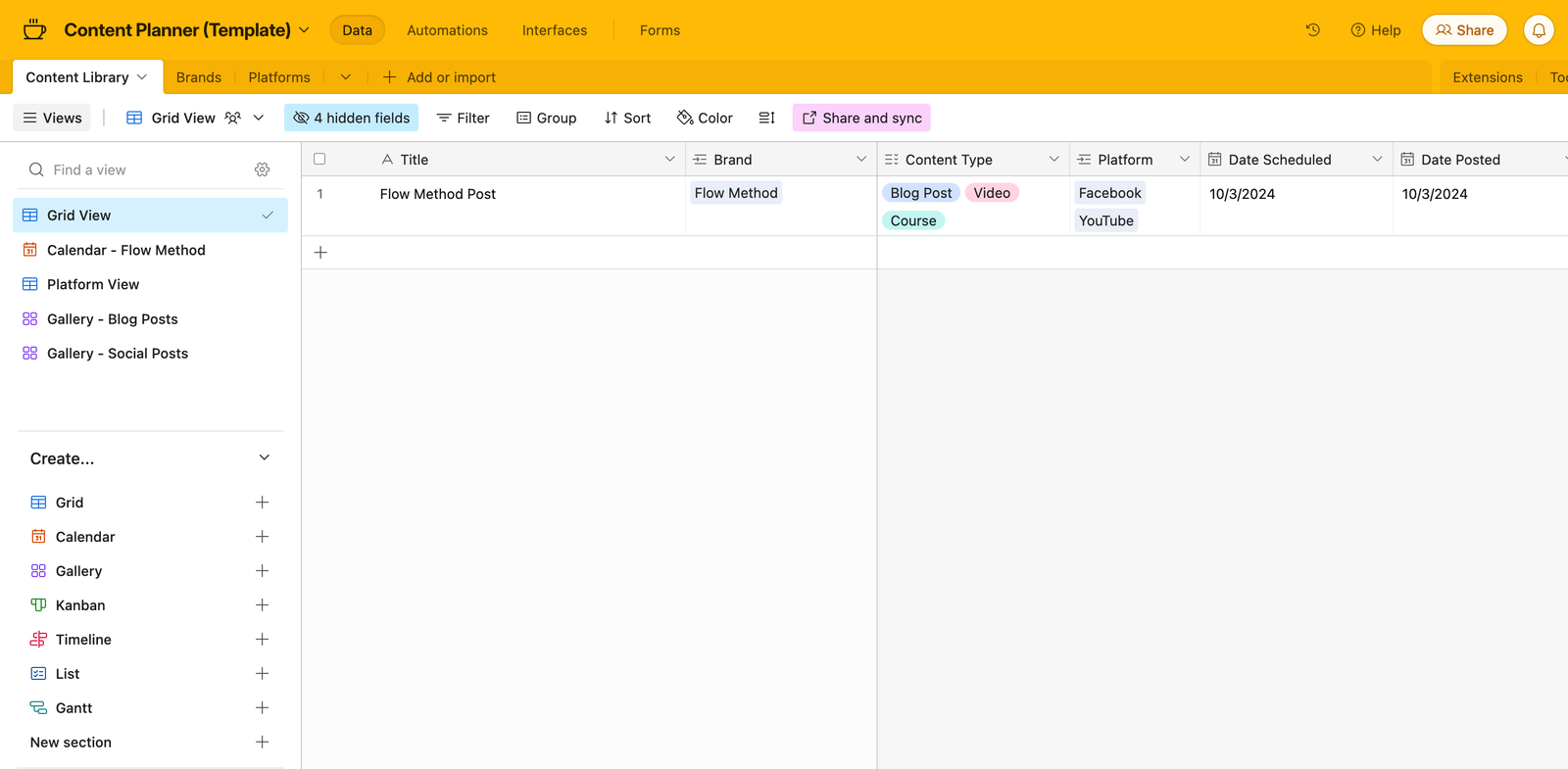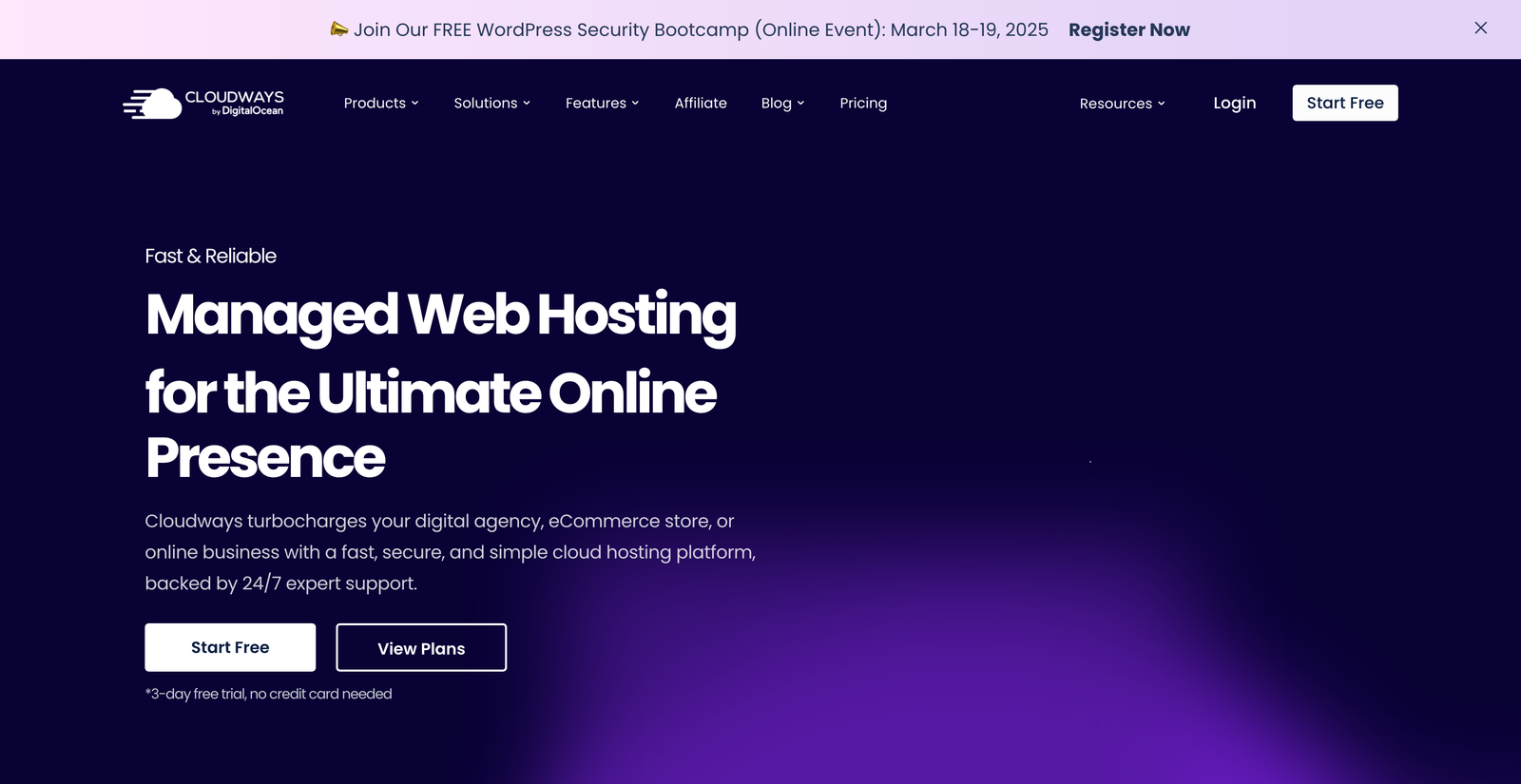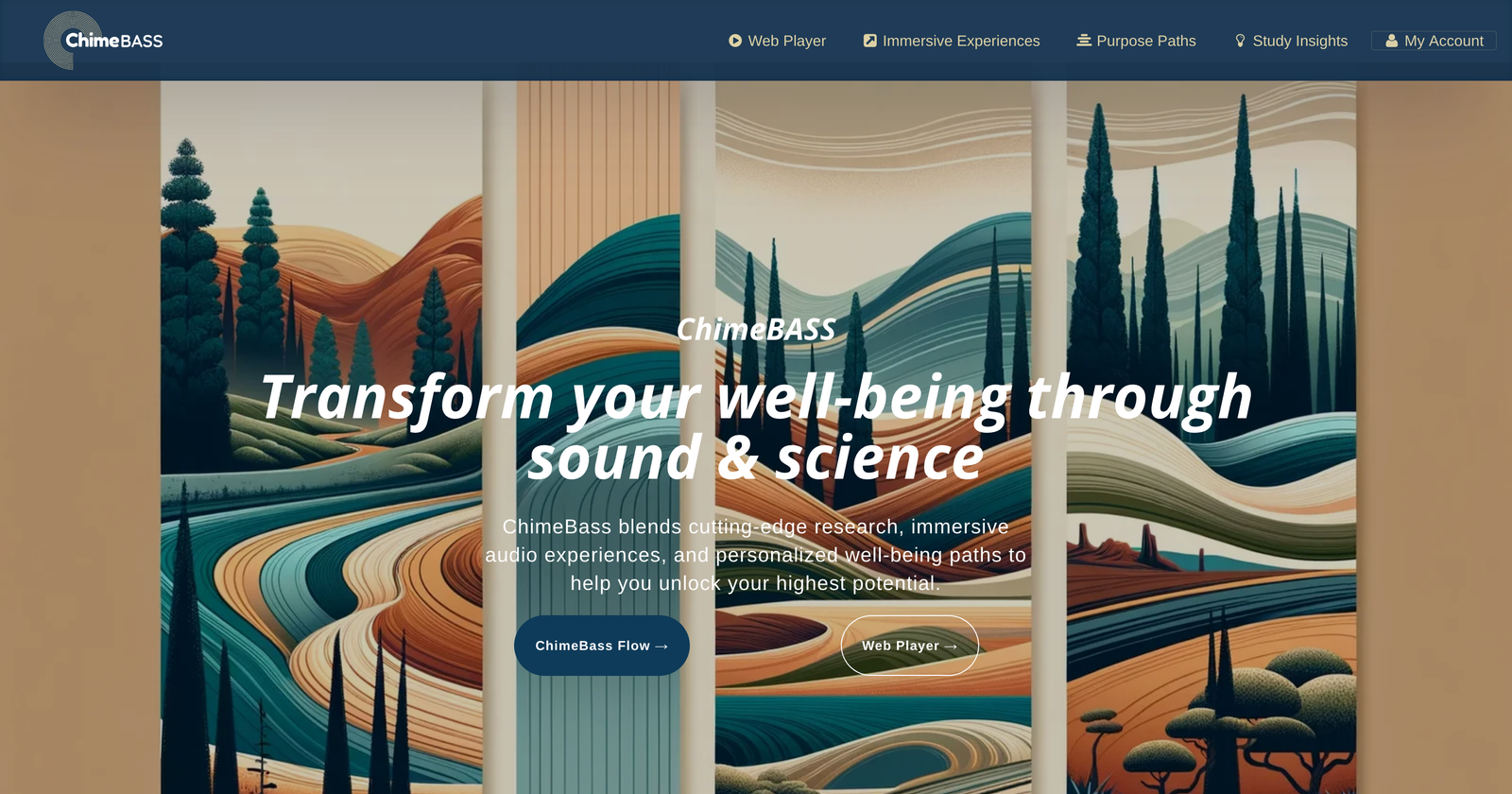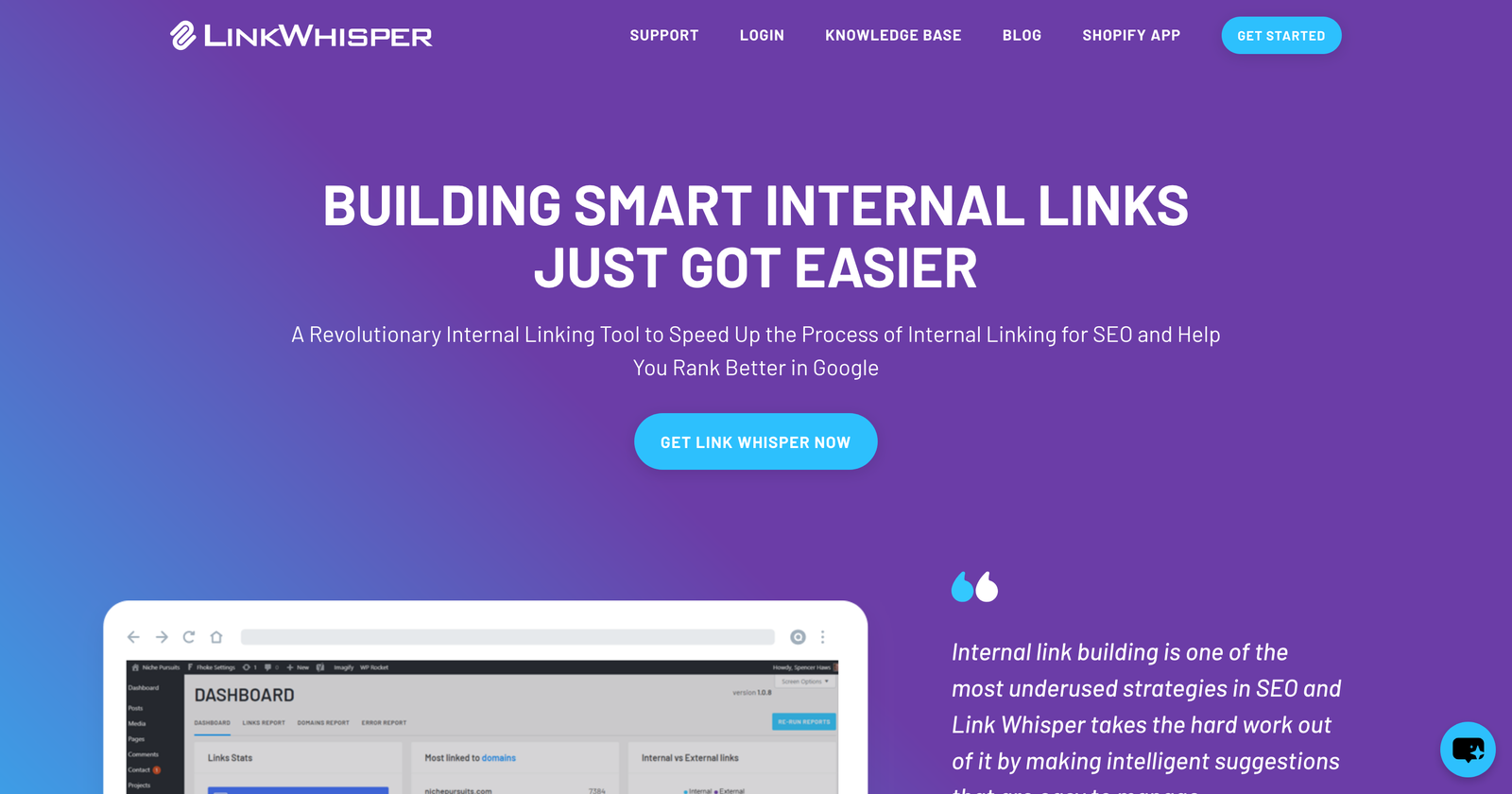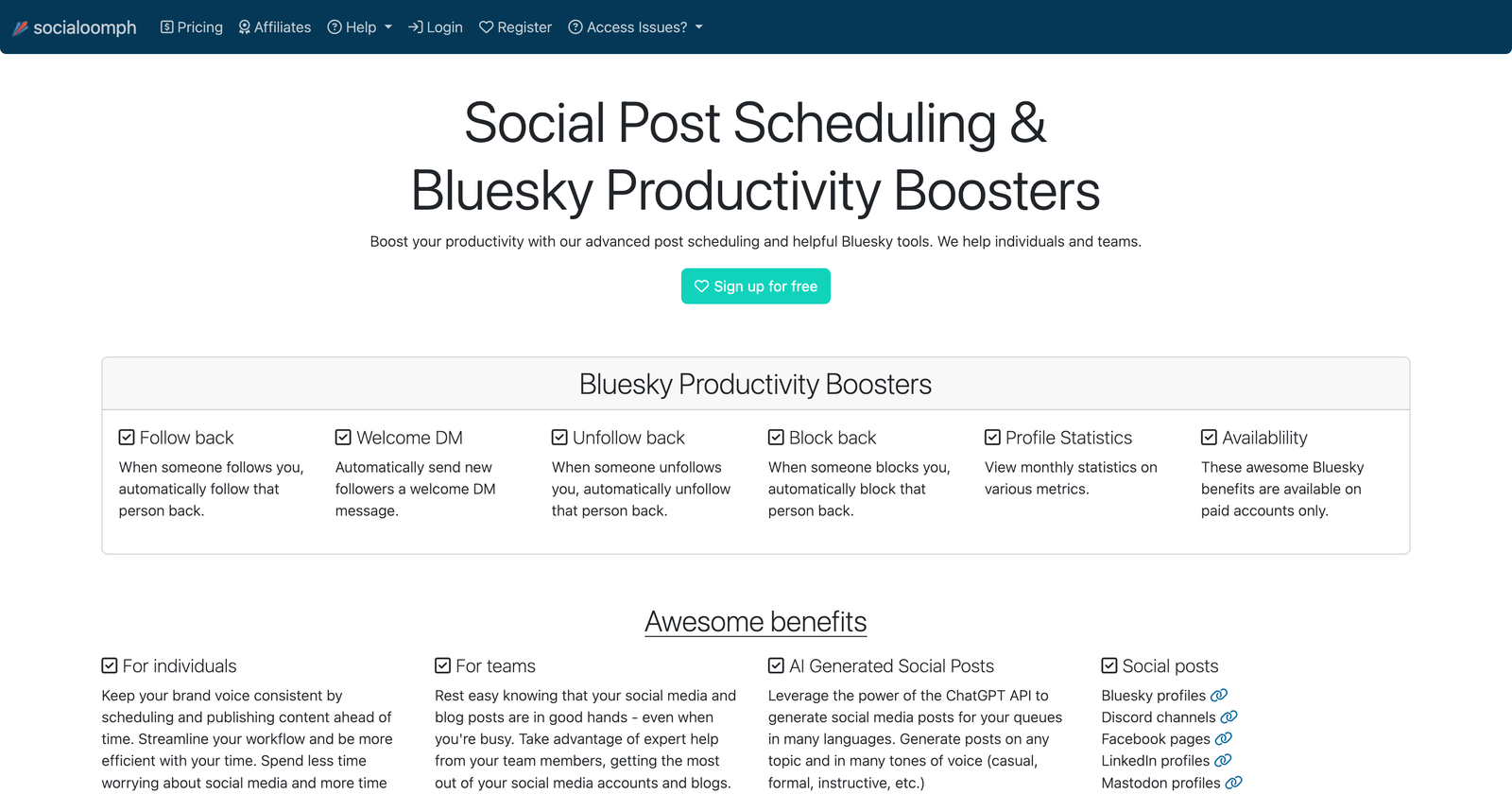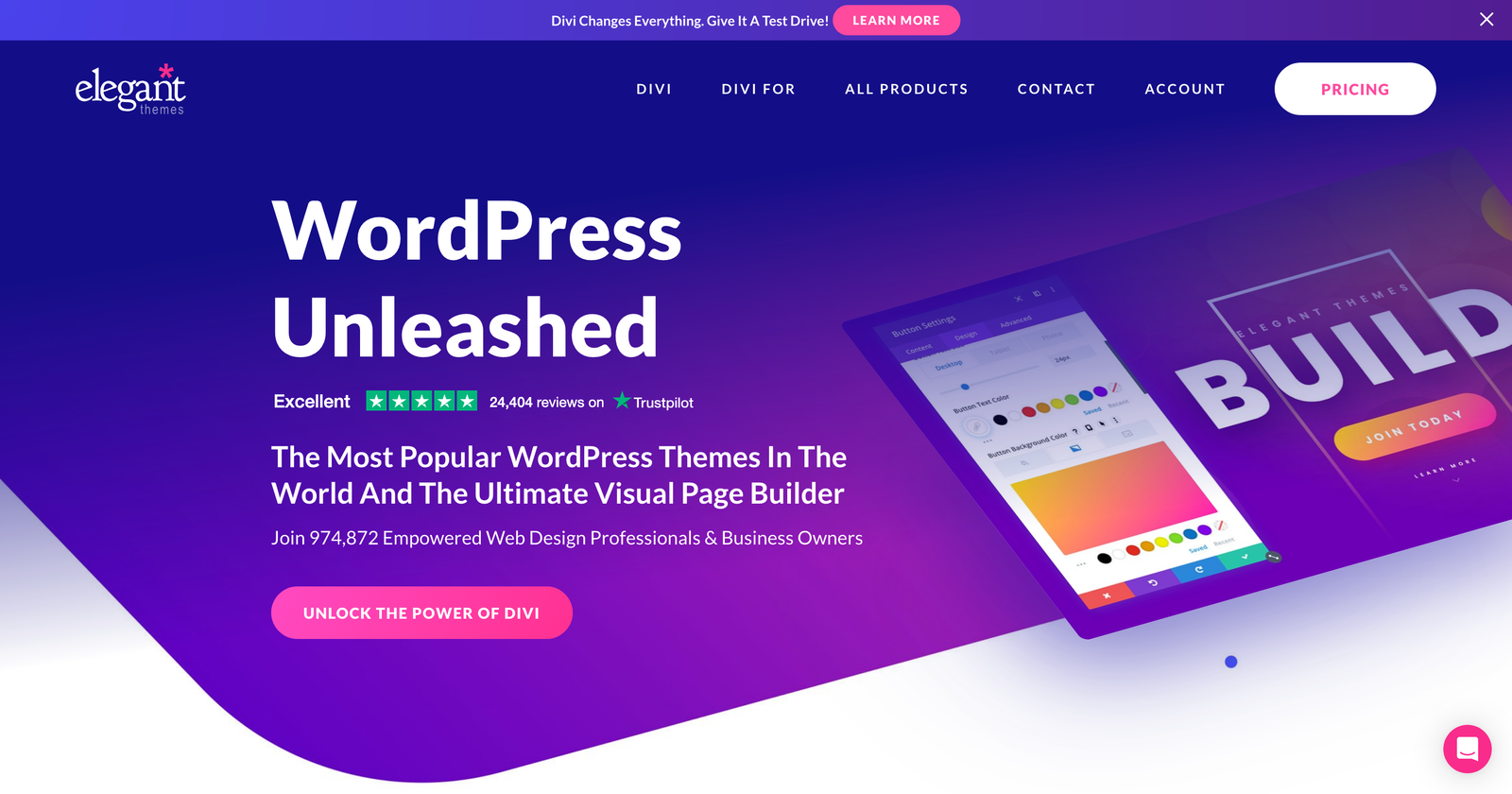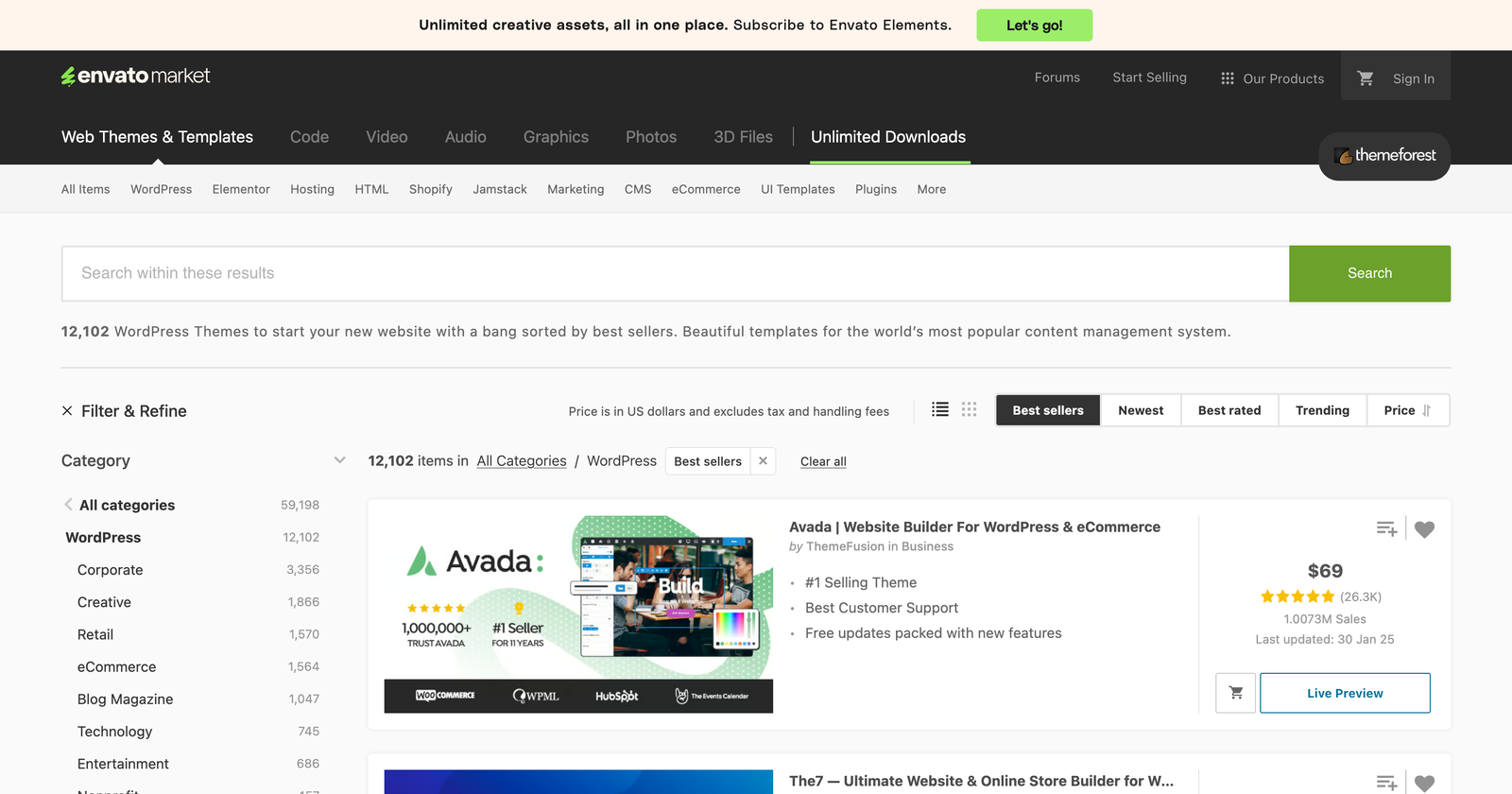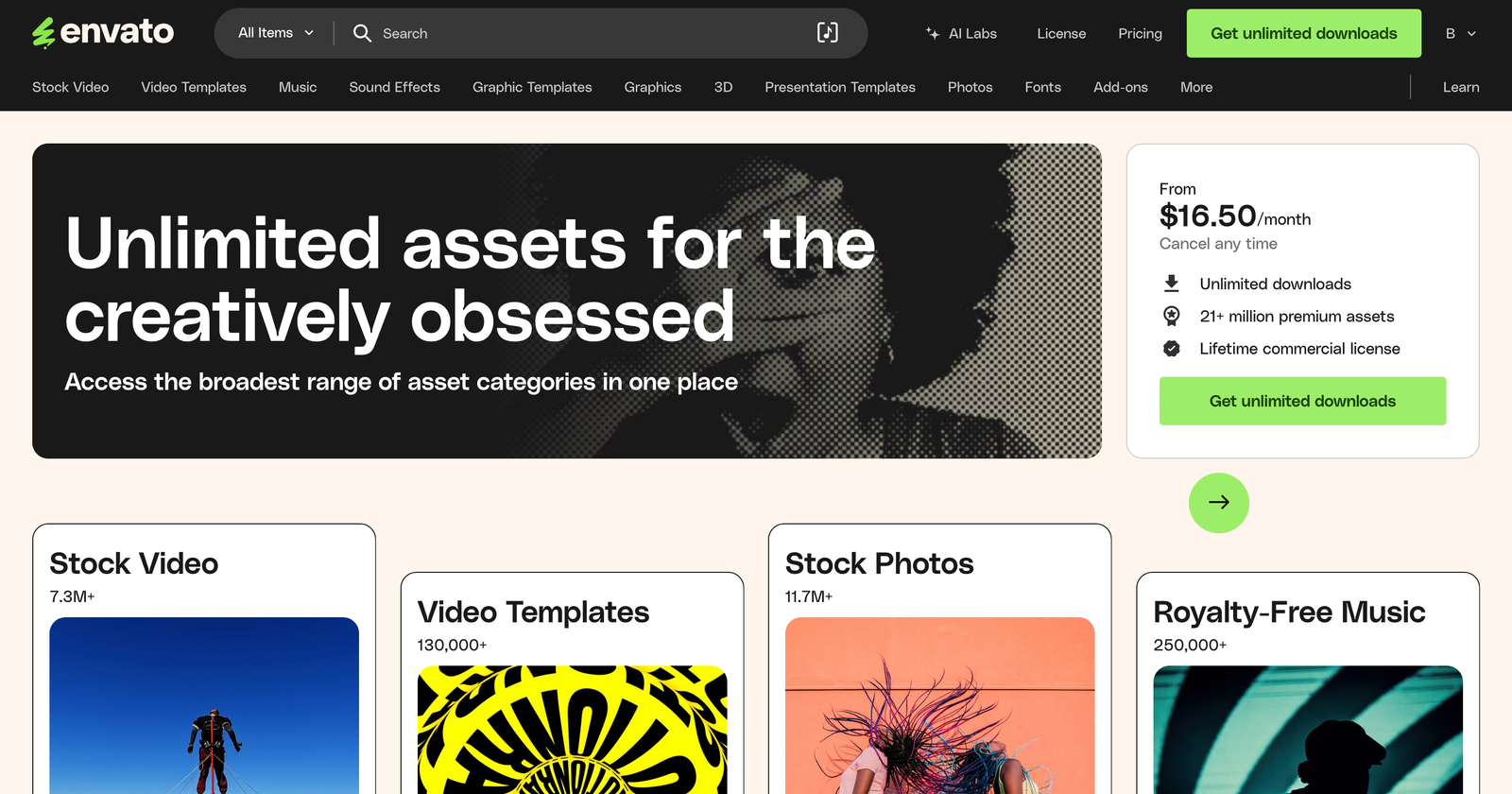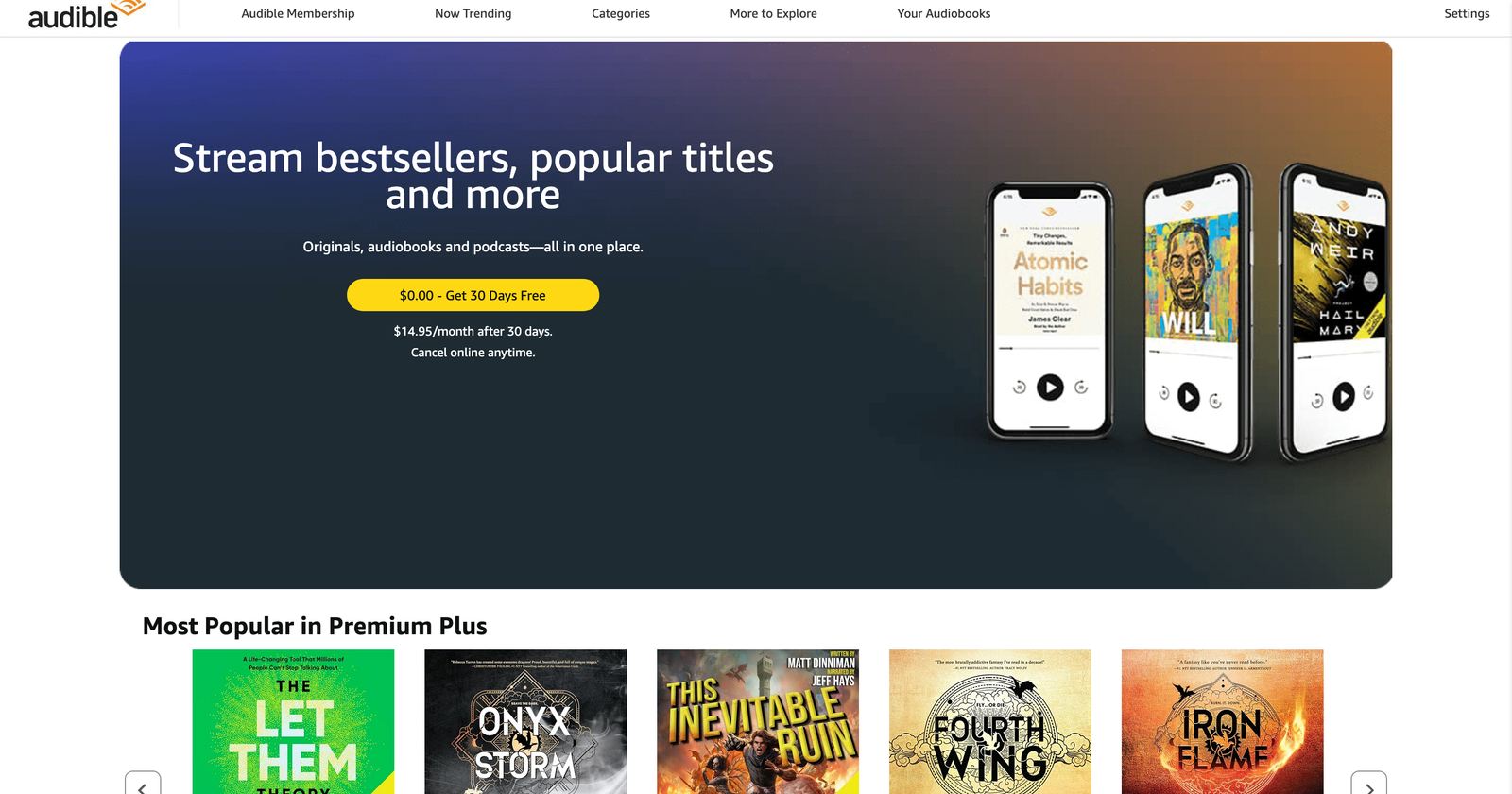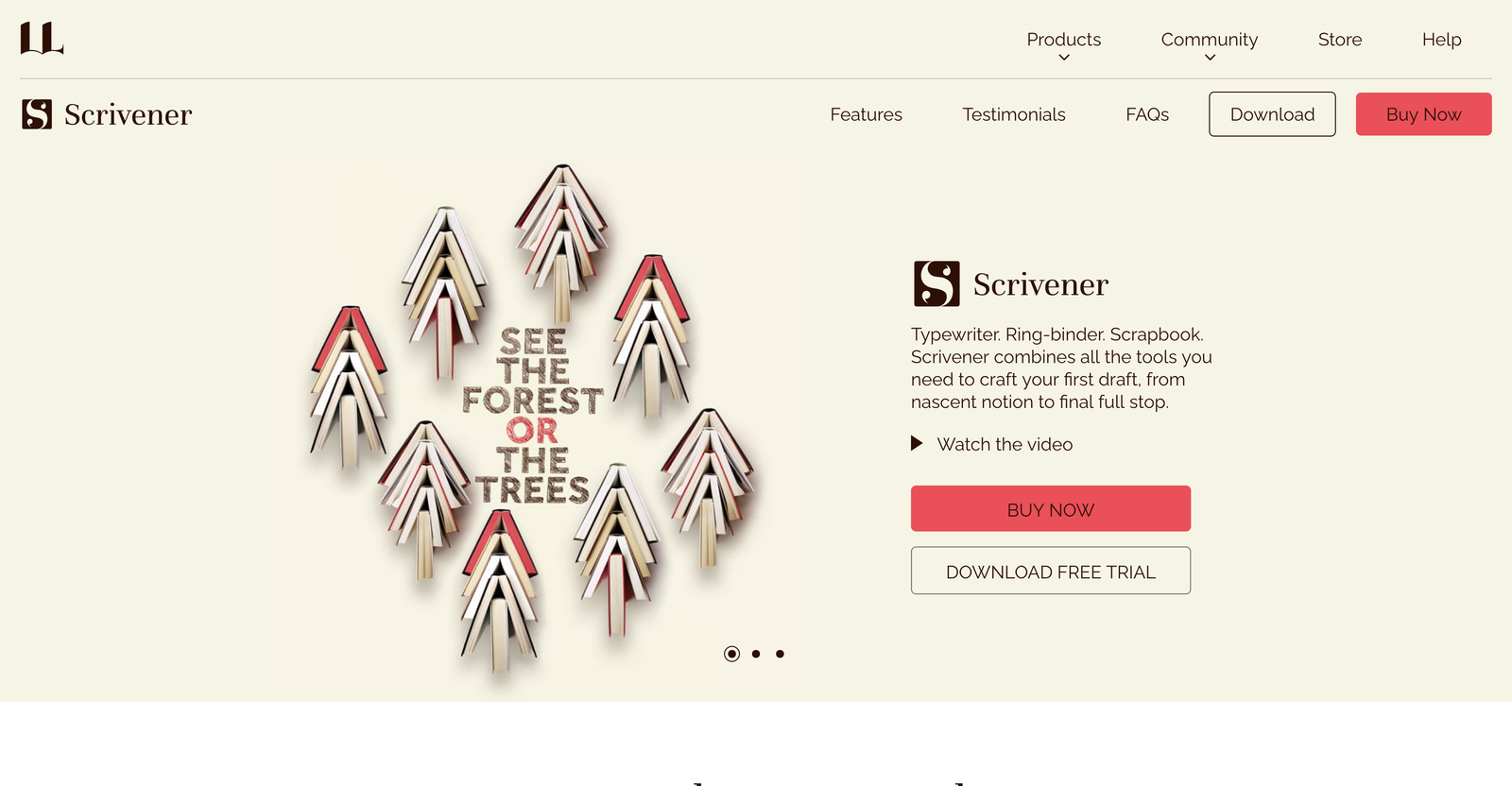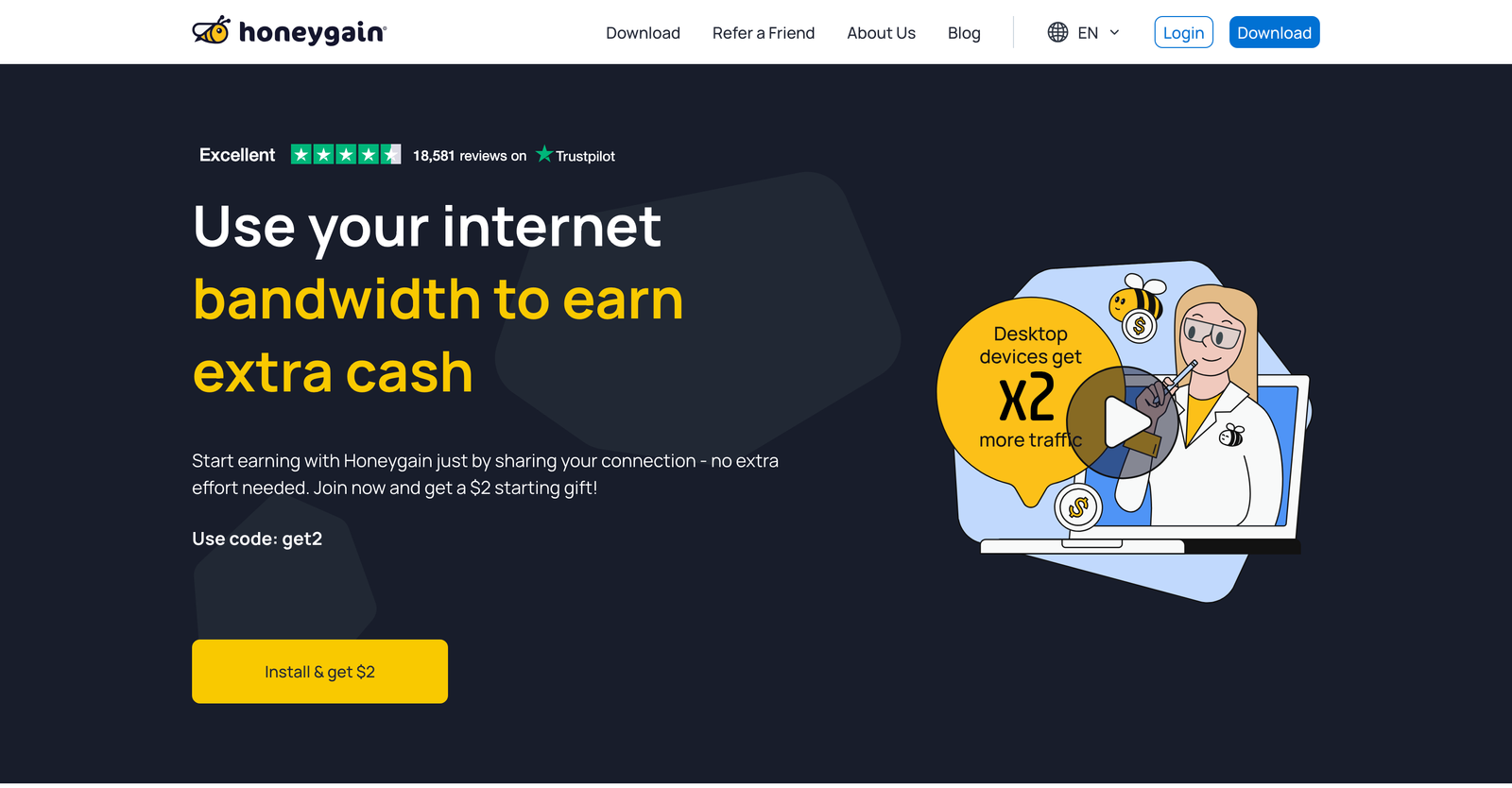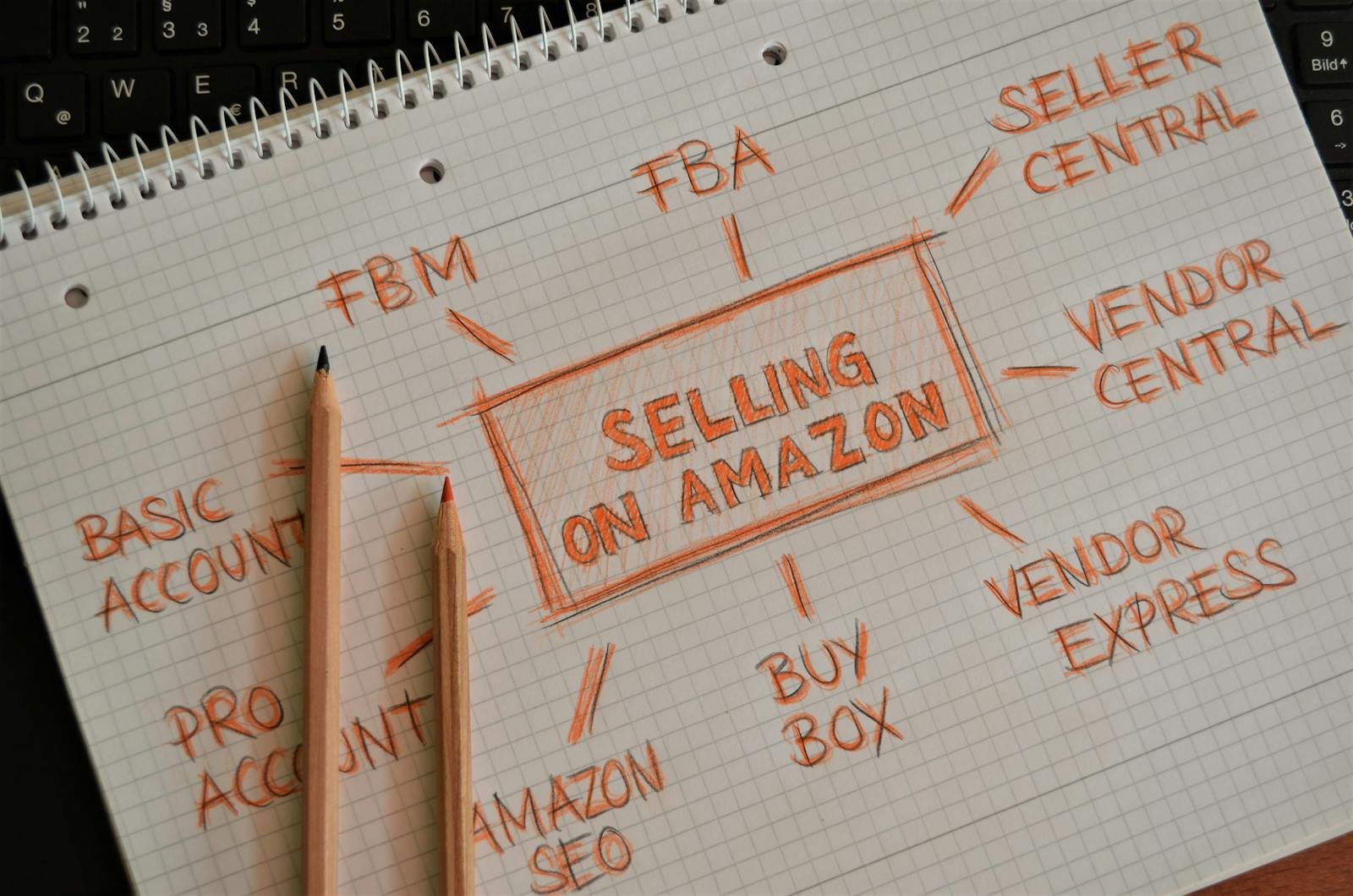Tiny Homes Business Insights
Affordable, Sustainable
Scalable – The Future of Housing.
Build, sell, or rent tiny homes & modular housing to meet the growing demand for affordable, flexible, and sustainable living.
Tiny Homes Business Insights
Affordable, Sustainable
Scalable – The Future of Housing.
Build, sell, or rent tiny homes & modular housing to meet the growing demand for affordable, flexible, and sustainable living.
Tiny Homes Business Insights
🏆 Overall Business Viability Score
💰 Profitability Score
🚀 Scalability Score
⏳ Time to Profitability Score
💸 Startup Cost Score
🛠️ Operational Complexity Score
📢 Marketing & Customer Acquisition Score
🤖 Automation & Passive Income Score
📈 Market Demand Score
⚠️ Competition Level Score
🌱 Sustainability & Longevity Score
📊 Revenue Stability Score
🏗️ Barrier to Entry Score
🎯 Target Market Size Score
🔧 Skill & Experience Requirement Score
📍 Location Flexibility Score
💼 Legal & Compliance Complexity Score
🔥 Economic Resilience Score
🔄 Recession Proof Score
🏁 Exit Strategy Score
Business Idea Overview:
Tiny homes and modular housing provide affordable, scalable, and sustainable real estate solutions. Entrepreneurs can sell, rent, or manufacture these compact homes, catering to a growing market of minimalists, real estate investors, and eco-conscious buyers. With rising housing costs and urbanization, this industry is positioned for long-term growth and profitability.
📊 Earning Potential
⚠️ Earnings Disclaimer: Actual earnings vary based on niche, strategy, and execution. There is no guarantee of success, and results depend on effort, market conditions, and business management.
🛠️ Best Platforms & Tools
- Website & E-Commerce: Shopify, Webflow, Namecheap
- SEO & Marketing Optimization: Rank Math, WP Advanced Ads
- Design & Prototyping: Figma
- Video Marketing & Editing: InVideo, Pictory, WeVideo, WiseCut
- Business Automation & CRM: Dubsado, Make, Systeme.io
- Lead Generation & Outreach: Outscraper
- Content Creation & Copywriting: JotPro
⚠️ Biggest Challenge
Navigating zoning laws, permits, and compliance is the biggest challenge. Additionally, high material and labor costs require careful budgeting and supplier management.
💸 Startup Costs & Investment
💰 Estimated Investment: $50K–$500K+, depending on scale.
- DIY Builder: $50K–$100K (small-scale, self-built units)
- Manufacturing & Sales: $250K+ (workshop setup, bulk material sourcing)
- Rental & Leasing Model: $100K+ (land acquisition, development costs)
📢 Customer Acquisition Strategy
📈 Ideal Business Model
✅ One-Time Sales: Selling pre-built or custom modular homes ($50K–$150K per unit).
✅ Recurring Revenue: Rental income from tiny home communities ($1K–$3K/month per unit).
✅ Subscription/Service Model: DIY home plans, online courses (Skillshare, Codeacademy).
⏳ Time to Profitability
Most businesses break even within 12–24 months, depending on sales volume and investment level. Rental models take longer but offer consistent passive income.
🚀 Key to Scaling
- Expand into multiple regions with prefab home shipping.
- Use automation tools like Make & Systeme.io to streamline operations.
- Offer high-ticket consulting or financing solutions (Fundrise, SafetyWing).
🤖 Automation & Passive Income Potential
- Automate email marketing & customer management (Dubsado).
- Sell subscription-based home plans or DIY kits.
- Monetize video content on YouTube using Pictory & InVideo.
- Generate rental income from Airbnb & corporate leasing.
View Automation Tools
🏁 Exit Strategy
- Sell the business to a real estate investment firm.
- License tiny home designs to manufacturers.
- Convert tiny home rentals into a passive income portfolio.
🌱 Sustainability & Longevity
Tiny homes are part of the future of real estate, driven by urbanization, environmental concerns, and off-grid living trends. The business model is sustainable long-term, with demand expected to grow.
🔄 Market Trends & Demand
- Eco-Friendly Housing Boom: More consumers demand energy-efficient, off-grid homes.
- Affordable Housing Crisis: Tiny homes are a solution to rising home prices.
- Remote Work Growth: Increased demand for flexible, minimalist living spaces.
🆚 Competition Level
Moderate to High – Differentiate by offering:
✅ Smart home features & automation
✅ Luxury or budget-friendly modular designs
✅ Financing options for tiny home buyers
Sign up for SEO Flow and start your keyword research today. SEOFlow.app
📍 Location Flexibility
Can be run remotely with prefab home shipping, or as an on-site construction business for local buyers.
Visit NomadWave’s Digital Nomad Community
🎯 Ideal Target Audience
- Millennials & Gen Z seeking affordable housing.
- Remote workers & digital nomads wanting mobility & flexibility.
- Eco-conscious buyers & off-grid living advocates.
- Real estate investors & Airbnb hosts looking for rental opportunities.
🏗️ Operational Complexity
- Moderate to High – Requires zoning expertise, supply chain management, and construction partnerships.
- Prefab models or contractor partnerships simplify the process.
Learn more about Tiny Home Construction
🔧 Required Skills & Experience
- Basic construction & real estate knowledge is beneficial.
- Marketing & digital strategy boost sales.
- No formal education required, but experience with zoning laws, finance, and materials sourcing is crucial.
💼 Legal & Compliance Considerations
- Zoning & Building Codes: Must comply with local regulations.
- Permits & Safety Compliance: Homes must meet structural safety standards.
- Financing & Lease Agreements: Partner with Fundrise or SafetyWing for better financing options.
📊 Best Monetization Strategies
✅ Selling pre-built tiny homes & modular units.
✅ Long-term rental models (Airbnb, land lease communities).
✅ Franchise/licensing agreements for home designs.
✅ E-commerce store selling DIY kits & digital home plans.
🔥 Recession & Economic Resilience
✔ Affordable housing is always in demand.
✔ Diversified income (sales, rentals, consulting) provides stability.
✔ Long-term sustainability aligns with future housing trends.
💰 Earning Potential: How Much Can You Make?
The tiny homes and modular housing business offers multiple revenue streams with high margins. Depending on the business model, location, and scale, entrepreneurs can earn anywhere from $50K to over $1M per year.
🔹 Revenue Streams & Profit Breakdown
1️⃣ 🏡 Direct Tiny Home Sales
- Price per unit: $50K – $150K+
- Profit margin: 20% – 50% per unit
- Annual potential: $250K – $1M+ (selling 5–10 homes per year)
- Scalability: Medium-High (more sales = more revenue)
2️⃣ 🏠 Tiny Home Rentals (Long-Term Leasing)
- Rental income per unit: $800 – $3,000/month
- Annual profit per unit: $9,600 – $36,000
- Potential earnings: $100K – $500K (with 5–20 units)
- Scalability: High (passive income potential)
3️⃣ 🌍 Airbnb & Short-Term Rentals
- Average nightly rate: $100 – $250
- Annual revenue per unit: $20K – $70K (depending on occupancy)
- Potential earnings: $100K – $500K+ (with 5+ Airbnb units)
- Scalability: High (seasonal variation, but strong cash flow)
4️⃣ 📦 Prefab DIY Tiny Home Kits & Modular Units
- Price per kit: $5K – $50K
- Profit margin: 40% – 60%
- Annual potential: $100K – $500K (selling 10–50 kits/year)
- Scalability: Very High (low labor cost, shipping-focused)
5️⃣ 🎓 Tiny Home Design Plans & Consulting
- Blueprint sales: $99 – $500 per plan
- Consulting fees: $100 – $300/hour
- Annual potential: $50K – $300K+ (digital and passive income)
- Scalability: Very High (fully online, passive model)
📊 Key Profitability Factors
- 🏗️ Manufacturing Costs: Materials, labor, and land impact margins.
- 📍 Location: Demand in urban vs. rural areas affects pricing.
- 🔄 Market Trends: Tiny home popularity increases long-term ROI.
- 🏡 Rental vs. Sales: Rentals create recurring income, while sales generate high one-time profits.
⚠️ Disclaimer
Earnings vary based on business model, market conditions, experience, and operational efficiency. Success requires strategic planning, marketing, and financial management to maximize profitability and scalability.
📌 Final Verdict: Tiny Homes & Modular Housing is a high-margin business with multiple income streams that can scale into six or seven figures per year. 🚀
⚠️ Earnings Disclaimer: Actual earnings vary based on niche, strategy, and execution. There is no guarantee of success, and results depend on effort, market conditions, and business management.
📈 Best Business Models for Tiny Homes & Modular Housing
The tiny homes and modular housing industry offers several highly profitable business models, each catering to different levels of investment, scalability, and passive income potential. The right model depends on your goals, capital, and operational capacity. Below are the top business models and their key benefits.
🏡 1. Direct Tiny Home Sales (High-Profit, One-Time Revenue)
🔹 How It Works:
- Build and sell custom, prefabricated, or modular homes to individuals, developers, or businesses.
- Offer turnkey solutions, pre-designed models, or custom-built tiny homes.
💰 Revenue Potential: $50K – $150K per unit
📊 Profit Margin: 20% – 50%
🚀 Scalability: Medium-High (More sales = more revenue)
🔄 Pros:
✅ High revenue per sale (one-time large payments)
✅ Flexible pricing for custom or prefabricated models
✅ Can be combined with rentals for additional income
⚠️ Cons:
❌ High upfront costs for materials & labor
❌ Slower cash flow unless sales volume is high
🏠 2. Rental Model (Recurring, Passive Income)
🔹 How It Works:
- Rent out tiny homes as long-term housing, vacation rentals, or Airbnb units.
- Target digital nomads, remote workers, eco-conscious renters, or off-grid enthusiasts.
💰 Revenue Potential: $800 – $3,000 per unit/month
📊 Profit Margin: 50% – 70% (after maintenance and fees)
🚀 Scalability: High (More units = more revenue)
🔄 Pros:
✅ Recurring monthly income with passive potential
✅ High-demand model with flexible rental terms
✅ Diversification (short-term vs. long-term leasing)
⚠️ Cons:
❌ High upfront cost per unit ($50K+ per home)
❌ Requires property management & maintenance
📦 3. Prefabricated Tiny Home Kits & DIY Models
🔹 How It Works:
- Sell modular home kits or prefabricated components that buyers assemble themselves.
- Offer kits with different customization options to target DIY homeowners.
💰 Revenue Potential: $5K – $50K per kit
📊 Profit Margin: 40% – 60%
🚀 Scalability: Very High (E-commerce, mass production possible)
🔄 Pros:
✅ Lower production costs than fully built homes
✅ Easier to scale via e-commerce and online sales
✅ Attractive to DIY enthusiasts & cost-conscious buyers
⚠️ Cons:
❌ Requires a reliable supplier & logistics system
❌ Buyers may need customer support for assembly
🎓 4. Tiny Home Design Plans & Consulting (Low-Cost, High-Profit Digital Model)
🔹 How It Works:
- Sell ready-made architectural blueprints for tiny homes online.
- Offer consulting services for custom home design & planning.
- Leverage digital platforms (Shopify, Webflow, Udemy, Skillshare) to sell online courses.
💰 Revenue Potential: $99 – $500 per blueprint, $100 – $300/hr consulting
📊 Profit Margin: 90%+ (fully digital, no physical costs)
🚀 Scalability: Extremely High (No inventory or fulfillment needed)
🔄 Pros:
✅ Passive income with digital downloads
✅ No manufacturing or logistics required
✅ Appeals to DIY homeowners & aspiring builders
⚠️ Cons:
❌ Lower per-sale revenue than physical homes
❌ Highly competitive online market
🏛️ 5. Tiny Home Communities & Land Leasing (Real Estate Investment Model)
🔹 How It Works:
- Develop a tiny home village or co-living community where tenants rent land & utilities.
- Lease lots for long-term residents, short-term rentals, or Airbnb stays.
💰 Revenue Potential: $500 – $2,500 per lot/month
📊 Profit Margin: 60% – 80% (after infrastructure investment)
🚀 Scalability: High (More land = more units = more revenue)
🔄 Pros:
✅ Recurring revenue with land leasing & rentals
✅ Can create a brand for sustainable, off-grid communities
✅ Attracts both long-term and short-term renters
⚠️ Cons:
❌ Requires zoning approval & legal expertise
❌ Large upfront investment for infrastructure
📊 Business Model Comparison Table
| Business Model | Revenue Potential | Scalability | Profit Margin | Passive Income Potential |
|---|---|---|---|---|
| Direct Tiny Home Sales | $50K – $150K per unit | Medium-High | 20% – 50% | ❌ (One-time sales) |
| Tiny Home Rentals | $800 – $3,000/month per unit | High | 50% – 70% | ✅ (Recurring rental income) |
| Prefab DIY Kits | $5K – $50K per kit | Very High | 40% – 60% | ✅ (E-commerce scalability) |
| Design Plans & Consulting | $99 – $500 per plan | Extremely High | 90%+ | ✅ (Fully digital & passive) |
| Tiny Home Communities | $500 – $2,500 per lot/month | High | 60% – 80% | ✅ (Real estate-based passive income) |
🔥 Best Model for You?
✅ If you want high revenue & physical assets: Direct Sales or Rentals
✅ If you want passive income with digital products: Design Plans & Consulting
✅ If you want an e-commerce-based model: Prefab DIY Kits
✅ If you want to build long-term real estate assets: Tiny Home Communities
📌 Final Verdict:
The best business model depends on your financial goals, investment level, and scalability preference. Tiny homes offer multiple ways to earn, from one-time high-ticket sales to recurring rental income and digital products. 🚀
Get JotPro, the intuitive AI writing tool with over 50 templates, and countless features like Speech-to-Text and Text-to-Speech. Sign Up Free
📢 Traffic Strategies for the Tiny Homes & Modular Housing Business
To succeed in the tiny home business, you need a consistent stream of targeted traffic to your website, e-commerce store, or booking platform. The right traffic strategy depends on your business model (direct sales, rentals, blueprints, or prefab kits). Below are the best traffic strategies to attract buyers, renters, and investors.
1️⃣ SEO & Content Marketing (Long-Term, Free Traffic)
✅ Tools: Rank Math, WP Advanced Ads, Webflow, Shopify
- Optimize your website and product pages to rank for high-intent keywords like “buy tiny home kits” or “eco-friendly modular homes.”
- Create blog content targeting real estate investors, DIY builders, and eco-conscious buyers.
- Use Rank Math to optimize product pages, blogs, and landing pages for search engines.
- Place targeted banner ads using WP Advanced Ads on high-traffic pages.
🔹 Best For: Tiny home sales, DIY kits, blueprint downloads
🔹 Traffic Potential: High (Free, Long-Term)
2️⃣ YouTube & Video Marketing (High Engagement, Evergreen Traffic)
✅ Tools: Pictory, InVideo, WeVideo, WiseCut
- Create educational & lifestyle videos showcasing tiny home builds, modular housing trends, and living experiences.
- Repurpose long-form video content for YouTube, TikTok, and Instagram Reels using Pictory & InVideo.
- Optimize video descriptions and titles to attract organic YouTube search traffic.
- Offer a free blueprint download or consultation in the video description to collect leads.
🔹 Best For: Rentals, high-ticket tiny home sales, digital blueprint sales
🔹 Traffic Potential: Very High (Especially for Visual Storytelling)
3️⃣ Paid Ads (Fast Traffic, Immediate ROI)
✅ Tools: WP Advanced Ads, Shopify, Webflow
- Run Google & Facebook ads targeting real estate investors, off-grid living enthusiasts, and minimalists.
- Retarget website visitors with remarketing campaigns using WP Advanced Ads.
- Focus on high-intent search ads for keywords like “buy modular home,” “tiny house for sale,” or “sustainable prefab homes.”
🔹 Best For: Selling high-ticket tiny homes, kits, or Airbnb stays
🔹 Traffic Potential: High (But Requires Budgeting for Ads)
4️⃣ Social Media Marketing (Organic & Paid Growth)
✅ Tools: WiseCut, InVideo, Webflow
- Use Instagram & TikTok to showcase tiny home interiors, time-lapse builds, and success stories.
- Automate video repurposing using Munch & WiseCut to turn long-form content into short-form clips.
- Post engaging carousel posts, before-and-after images, and 3D renderings of modular homes.
- Run Facebook & Instagram ads to drive direct sales or bookings.
🔹 Best For: Brand awareness, generating interest, rentals
🔹 Traffic Potential: Medium-High
5️⃣ Influencer & Affiliate Marketing (High Trust, Targeted Traffic)
✅ Tools: Shopify, Systeme.io, Webflow
- Partner with real estate influencers & YouTubers to promote tiny home communities, Airbnb rentals, and kits.
- Offer affiliate commissions to bloggers, YouTubers, or influencers promoting your tiny home business.
- Use Systeme.io to track affiliate sales and automate commissions.
🔹 Best For: Tiny home kits, Airbnb rentals, blueprint sales
🔹 Traffic Potential: High (Trust-Based Marketing)
6️⃣ Pinterest & Visual Search (Evergreen Traffic for DIY & Home Design)
✅ Tools: Pictory, Canva, Webflow
- Pin home designs, interior layouts, and blueprint previews to drive organic Pinterest traffic.
- Use Pinterest SEO to rank for searches like “tiny home floor plans” or “modern modular houses.”
- Link pins to your website, e-commerce store, or a free lead magnet.
🔹 Best For: Blueprint sales, prefab kit marketing, rentals
🔹 Traffic Potential: High (Great for Home & Design Audiences)
7️⃣ Local & Community-Based Marketing (Hyper-Targeted for Rentals & Custom Homes)
✅ Tools: Webflow, Namecheap, Flodesk
- List your tiny home rentals on Airbnb, Zillow, and Facebook Marketplace.
- Build relationships with real estate agents, property investors, and developers.
- Set up an email marketing list using Flodesk to nurture leads and convert them over time.
- Use local SEO & Google My Business to attract regional buyers.
🔹 Best For: Rentals, local tiny home sales, real estate deals
🔹 Traffic Potential: Medium (But High-Conversion Rate)
📊 Traffic Strategy Comparison Table
| Traffic Strategy | Best For | Traffic Potential | Cost |
|---|---|---|---|
| SEO & Content Marketing | Tiny home sales, DIY kits, blueprint downloads | High | Free (Long-Term) |
| YouTube & Video Marketing | Rentals, high-ticket sales, digital plans | Very High | Free (Organic) |
| Paid Ads (Google & Facebook) | High-ticket sales, Airbnb rentals | High | Paid |
| Social Media (Instagram, TikTok, Pinterest) | Brand awareness, lifestyle marketing | Medium-High | Free & Paid |
| Affiliate & Influencer Marketing | Rentals, blueprint sales, kits | High | Performance-Based |
| Local SEO & Community Marketing | Rentals, custom home buyers, real estate | Medium | Free & Paid |
📌 Final Verdict: Best Traffic Strategies for Tiny Homes
✅ Best Long-Term Strategy: SEO, YouTube, Pinterest, and email marketing.
✅ Best for Fast Sales: Google & Facebook Ads, Influencer Marketing.
✅ Best for Passive Lead Generation: Affiliate marketing, YouTube videos, content marketing.
📌 Final Thought:
A multi-channel strategy works best. Combining SEO, video, paid ads, and influencer marketing creates a sustainable traffic system that attracts buyers, renters, and investors year-round. 🚀
🎯 Conversion Tactics for the Tiny Homes & Modular Housing Business
Driving traffic to your tiny home business is only half the battle—converting visitors into paying customers is where the real profits come in. Whether you’re selling tiny homes, modular housing kits, blueprints, or rentals, using high-converting strategies will maximize your revenue. Below are the best conversion tactics to increase sales and bookings.
1️⃣ High-Converting Landing Pages (Make Every Click Count)
- Use clean, minimalist designs to keep visitors focused on your offer.
- Include clear call-to-action (CTA) buttons like “Buy Now,” “Schedule a Tour,” or “Download Blueprint.”
- Optimize landing pages with customer testimonials, key benefits, and urgency elements to drive conversions.
🔹 Best For: Selling modular homes, DIY kits, and blueprints
🔹 Conversion Impact: High
2️⃣ Lead Magnets & Free Offers (Hook Visitors with Value)
- Offer a free tiny home floor plan, cost calculator, or e-book in exchange for an email signup.
- Set up automated email sequences to nurture leads and guide them toward purchasing.
- Create a simple, high-converting lead capture form with minimal distractions.
🔹 Best For: Capturing potential buyers, investors, and renters
🔹 Conversion Impact: Medium-High
3️⃣ Scarcity & Urgency (Create FOMO & Drive Action)
- Use limited-time discounts or “Only 2 Units Left” notifications for tiny home purchases.
- Add countdown timers on your landing pages and emails to create urgency.
- Run flash sales for blueprint downloads or modular home reservations.
🔹 Best For: Driving quick action on product purchases & bookings
🔹 Conversion Impact: High
4️⃣ Social Proof & Testimonials (Build Trust & Credibility)
- Showcase video testimonials from satisfied tiny home buyers and renters.
- Add “Featured In” sections displaying logos of media coverage, partnerships, or influencers who have endorsed your tiny home brand.
- Use real customer images & success stories on landing pages to boost trust.
🔹 Best For: Converting hesitant buyers & new customers
🔹 Conversion Impact: Very High
5️⃣ One-Click Upsells & Bundled Offers (Increase Order Value)
- Offer bundled packages like “Buy a Tiny Home + Get a Free Solar Panel Kit.”
- Use one-click upsells to suggest add-ons like furniture packages, off-grid systems, or consulting calls.
- Set up post-purchase upsells to encourage higher spending.
🔹 Best For: Maximizing revenue per customer
🔹 Conversion Impact: High
6️⃣ Video Sales Funnels (Convert Warm Leads with Storytelling)
- Use story-driven videos to show potential buyers how your tiny home solution fits their lifestyle.
- Include a clear CTA at the end of the video (e.g., “Schedule a Call,” “Buy Now,” “Reserve a Unit.”)
- Repurpose sales videos for landing pages, YouTube, and social media ads.
🔹 Best For: Selling high-ticket tiny homes & modular housing units
🔹 Conversion Impact: Very High
7️⃣ Email Marketing & Abandoned Cart Recovery (Follow Up for the Win)
- Automate email sequences to nurture potential buyers over time.
- Send personalized follow-ups with limited-time offers to visitors who didn’t complete their purchase.
- Use cart recovery emails to bring back lost sales and convert hesitant buyers.
🔹 Best For: Converting hesitant buyers & warm leads
🔹 Conversion Impact: High
📊 Conversion Tactics Comparison Table
| Conversion Strategy | Best For | Conversion Impact |
|---|---|---|
| High-Converting Landing Pages | Selling modular homes, kits, blueprints | High |
| Lead Magnets & Free Offers | Capturing leads, investors, and potential buyers | Medium-High |
| Scarcity & Urgency | Driving immediate action | High |
| Social Proof & Testimonials | Building trust & credibility | Very High |
| One-Click Upsells & Bundles | Increasing order value | High |
| Video Sales Funnels | Selling high-ticket items | Very High |
| Email Marketing & Cart Recovery | Recapturing lost sales | High |
📌 Final Verdict: Best Conversion Tactics for Tiny Homes
✅ Best for Immediate Sales: Scarcity tactics, high-converting landing pages, video sales funnels.
✅ Best for Long-Term Growth: Lead magnets, email marketing, social proof.
✅ Best for Maximizing Profits: Upsells, bundling, and abandoned cart recovery.
📌 Final Thought:
Conversion optimization is key to success in the tiny home industry. By implementing proven tactics like scarcity, high-converting landing pages, and automated email follow-ups, you can increase sales, maximize revenue, and scale your business efficiently. 🚀
💰 Most Profitable Niches in the Tiny Homes & Modular Housing Business
The tiny home and modular housing industry offers multiple profitable niches, each catering to different lifestyles, budgets, and customer needs. Whether you’re selling homes, renting them out, or offering design services, focusing on high-demand, high-profit niches will help maximize revenue and ensure business growth.
1️⃣ Luxury & High-End Tiny Homes
- Targets affluent buyers looking for custom, high-quality tiny homes with premium materials, smart technology, and luxury finishes.
- Higher price points mean bigger profit margins per sale.
- Demand is growing among retirees, remote workers, and minimalists seeking upscale alternatives to traditional housing.
🔹 Best For: Selling high-ticket, custom-built tiny homes
🔹 Profit Potential: Very High
2️⃣ Short-Term Rentals & Airbnb Tiny Homes
- Convert tiny homes into Airbnb rentals and generate recurring income.
- Popular among travelers, digital nomads, and eco-tourism enthusiasts looking for unique stays.
- A single tiny home can generate $30K – $100K+ per year, depending on location.
🔹 Best For: Entrepreneurs who want recurring, passive income.
🔹 Profit Potential: High
3️⃣ Off-Grid & Sustainable Living Solutions
- Capitalizes on the growing demand for eco-friendly living with solar-powered, water-efficient, and self-sustaining tiny homes.
- Appeals to environmentally-conscious buyers who value energy independence and low carbon footprints.
- Governments and organizations are offering grants and tax incentives for green housing solutions.
🔹 Best For: Eco-conscious buyers, remote retreats, sustainable communities.
🔹 Profit Potential: Very High
4️⃣ Tiny Home Villages & Communities
- Develop tiny home communities targeting affordable housing solutions, co-living spaces, and retirement villages.
- Earn through lot rentals, shared amenities, and community-based living.
- High demand in cities where housing costs are skyrocketing.
🔹 Best For: Entrepreneurs who want to scale beyond individual home sales.
🔹 Profit Potential: High (Recurring Revenue)
5️⃣ DIY Tiny Home Kits & Blueprint Sales
- Sell pre-designed tiny home kits or blueprints for DIY enthusiasts.
- Requires low overhead costs compared to building physical homes.
- Can be sold as digital downloads or pre-fabricated kits shipped directly to customers.
🔹 Best For: Digital entrepreneurs, online business owners, and DIY builders.
🔹 Profit Potential: Very High (Low-Cost, High-Margin)
6️⃣ Corporate & Workforce Housing Solutions
- Provide affordable modular housing solutions for construction workers, oil field workers, and remote employees.
- Businesses and governments are investing in temporary workforce housing solutions due to rising costs of traditional housing.
- Contracts with companies or government agencies can generate long-term recurring revenue.
🔹 Best For: Entrepreneurs who want consistent, high-volume sales.
🔹 Profit Potential: High
7️⃣ Backyard ADUs & Home Office Pods
- Sell Accessory Dwelling Units (ADUs) or modular home offices for homeowners looking to expand their space.
- Appeals to remote workers, families needing guest houses, and rental property investors.
- Many states are relaxing zoning laws to allow more backyard ADUs.
🔹 Best For: Builders, modular home designers, and rental investors.
🔹 Profit Potential: Very High (Growing Demand in Urban Areas)
📊 Most Profitable Niches Comparison Table
| Niche | Best For | Profit Potential | Business Model |
|---|---|---|---|
| Luxury & High-End Tiny Homes | High-income buyers | Very High | Custom builds, high-ticket sales |
| Short-Term Rentals & Airbnb | Passive income seekers | High | Recurring revenue from rentals |
| Off-Grid & Sustainable Living | Eco-conscious buyers | Very High | Solar-powered, energy-efficient homes |
| Tiny Home Villages & Communities | Real estate developers | High | Lot rentals, community-based living |
| DIY Kits & Blueprint Sales | Online business owners | Very High | Digital downloads, prefabricated kits |
| Corporate & Workforce Housing | Businesses & government agencies | High | B2B contracts, bulk orders |
| Backyard ADUs & Home Office Pods | Homeowners, real estate investors | Very High | Prefab ADUs, modular workspace units |
📌 Final Verdict: Best Niches for Tiny Home Businesses
✅ Best for High Margins: Luxury tiny homes, off-grid solutions, backyard ADUs.
✅ Best for Passive Income: Short-term rentals, workforce housing, tiny home villages.
✅ Best for Digital Entrepreneurs: DIY kits, blueprint sales.
✅ Best for Scaling: Tiny home communities, corporate housing contracts.
📌 Final Thought:
Choosing the right niche is essential for maximizing profits in the tiny home industry. Whether you focus on high-ticket custom builds, digital blueprint sales, or rental income, the tiny home business offers diverse and scalable opportunities. 🚀
🏗️ Tiny Homes & Modular Housing Business vs. Other Businesses
The tiny homes & modular housing business stands out from other industries due to its scalability, long-term demand, and flexibility in monetization. However, like any business, it has unique challenges and advantages when compared to other real estate, e-commerce, and service-based businesses. Below is a breakdown of how it stacks up against other popular business models.
1️⃣ Tiny Homes vs. Traditional Real Estate Development
| Factor | Tiny Homes & Modular Housing | Traditional Real Estate Development |
|---|---|---|
| Startup Costs | Lower (can start with one tiny home) | Very high (land acquisition, construction, permits) |
| Time to Profitability | Faster (pre-sold units, rentals, or kits) | Longer (long construction timelines) |
| Market Demand | Growing demand for affordable & sustainable housing | Strong, but subject to market downturns |
| Flexibility | Can pivot between sales, rentals, kits, or communities | Less flexible, requires large capital |
| Regulatory Hurdles | Some zoning restrictions but improving | Heavily regulated, requiring approvals |
📌 Verdict: Tiny home businesses offer lower startup costs, faster ROI, and more flexibility, making it easier to enter than large-scale real estate development.
2️⃣ Tiny Homes vs. E-Commerce & Dropshipping
| Factor | Tiny Homes & Modular Housing | E-Commerce & Dropshipping |
|---|---|---|
| Profit Per Sale | High (each unit can sell for $50K – $150K+) | Low (profit per sale often under $50) |
| Competition Level | Moderate (niche market, but growing) | Very high (crowded online marketplace) |
| Scalability | High (can expand into rentals, kits, or communities) | High (low overhead, easy automation) |
| Time to Profitability | Moderate (depends on sales cycle) | Fast (quick setup, instant transactions) |
| Passive Income Potential | High (Airbnb, rental communities, kits) | High (dropshipping automation, subscriptions) |
📌 Verdict: E-commerce is easier to start, but tiny home businesses offer significantly higher profit per sale and more long-term passive income potential with rentals and communities.
3️⃣ Tiny Homes vs. Service-Based Businesses (Consulting, Coaching, Freelancing)
| Factor | Tiny Homes & Modular Housing | Service-Based Businesses |
|---|---|---|
| Earning Potential | High (big-ticket sales, rental income) | Moderate (limited by time and hourly rates) |
| Scalability | High (can grow into multiple properties, rentals, or sales) | Limited (depends on expertise and workload) |
| Passive Income | High (rentals, blueprint sales, licensing) | Low (requires ongoing client work) |
| Client Acquisition | Requires targeted marketing | Easier (clients need recurring services) |
| Upfront Investment | Higher (materials, land, or construction costs) | Low (only requires skills and tools) |
📌 Verdict: Service-based businesses are easier to start, but tiny home businesses offer higher revenue potential and the ability to generate passive income.
4️⃣ Tiny Homes vs. Stock Trading & Investing
| Factor | Tiny Homes & Modular Housing | Stock Trading & Investing |
|---|---|---|
| Risk Level | Moderate (market demand & zoning laws) | High (market volatility, potential losses) |
| Profitability | High (sales, rentals, recurring revenue) | Varies (profits depend on capital & skill) |
| Passive Income | High (rentals, lease agreements) | Moderate (dividends, long-term investing) |
| Time Commitment | Moderate (hands-on initially, then automated) | Requires ongoing research and trading |
| Scalability | High (multiple properties, franchising) | Limited by capital and investment options |
📌 Verdict: Stock trading can generate profits faster but carries high risks, while tiny home businesses offer more stable, tangible assets and long-term passive income.
5️⃣ Tiny Homes vs. Subscription-Based Businesses
| Factor | Tiny Homes & Modular Housing | Subscription-Based Businesses |
|---|---|---|
| Revenue Consistency | High (rentals, lease agreements) | Very high (recurring revenue model) |
| Scalability | High (expand into different types of housing) | High (subscriptions grow exponentially) |
| Customer Acquisition | Moderate (targeted buyers, real estate market-dependent) | Moderate (marketing costs for subscribers) |
| Passive Income Potential | Very high (long-term rentals, Airbnb) | High (automated recurring billing) |
| Market Demand | Growing (housing crisis, affordable housing demand) | Growing (people prefer subscriptions over ownership) |
📌 Verdict: Both models offer strong passive income potential, but subscription businesses require constant engagement and customer retention, whereas tiny homes can generate passive rental income with less maintenance.
📌 Final Verdict: Is the Tiny Homes Business Right for You?
✅ Best for Long-Term Stability & High Margins: Tiny homes outperform most businesses in terms of revenue per sale.
✅ Best for Passive Income: Rentals, modular housing communities, and blueprint sales provide ongoing revenue.
✅ Best for Low Competition & Market Growth: The demand for affordable and sustainable housing is rising.
✅ Best for Flexibility & Scalability: Options to pivot into rentals, sales, or licensing make this highly scalable.
📌 Final Thought:
The tiny home business bridges the gap between real estate, e-commerce, and passive income models, offering high profit margins, flexible revenue streams, and long-term stability—making it one of the most attractive business opportunities today. 🚀
🚀 Future Trends in the Tiny Homes & Modular Housing Business
The tiny home and modular housing industry is experiencing rapid innovation, driven by rising housing costs, sustainability trends, and lifestyle shifts. As technology and market demand evolve, new opportunities are emerging for entrepreneurs in this space. Below are the key future trends shaping the industry and how businesses can leverage them for long-term success.
1️⃣ Sustainable & Off-Grid Tiny Homes Will Dominate
- Eco-friendly housing is becoming a top priority as consumers seek energy-efficient and self-sustaining living spaces.
- Solar-powered, water-recycling, and off-grid capabilities will become standard features rather than luxury add-ons.
- Government incentives and tax breaks for green housing solutions will drive demand even higher.
📌 Opportunity: Invest in renewable energy integrations, rainwater collection systems, and net-zero tiny home models.
2️⃣ Smart & AI-Integrated Homes Will Become the Norm
- Smart home technology is rapidly advancing, with AI-powered automation for security, climate control, and energy efficiency.
- More buyers are looking for voice-controlled systems, remote monitoring, and home automation in tiny homes.
- AI-powered home designs will make it easier to customize modular homes based on customer preferences and lifestyle needs.
📌 Opportunity: Incorporate smart home features and leverage AI-driven tools to enhance personalization and efficiency.
3️⃣ Urban Housing Crisis Will Fuel Demand for ADUs & Modular Homes
- Major cities are easing zoning laws to allow more accessory dwelling units (ADUs) for backyard rentals and additional housing.
- Rising rent prices are pushing urban homeowners to invest in modular homes as income-generating properties.
- Modular apartments & co-living communities will continue to gain traction as alternatives to expensive city housing.
📌 Opportunity: Focus on modular ADUs, rental-friendly tiny homes, and scalable urban housing solutions.
4️⃣ 3D Printing & Prefabrication Will Reduce Costs & Build Times
- 3D-printed homes and automated prefab manufacturing are making construction faster and more cost-efficient.
- Innovations in modular construction allow for mass production of tiny home kits, reducing material waste and labor costs.
- On-demand home delivery models will make it possible for buyers to purchase homes like they would a car.
📌 Opportunity: Explore prefabricated and 3D-printed home production to offer faster turnaround times and lower pricing.
5️⃣ Tiny Homes as Investment Assets & Rental Properties
- Short-term rental platforms (Airbnb, VRBO) are fueling demand for tiny home rentals as vacation getaways.
- Investors are turning tiny homes into high-yield rental properties, often generating higher returns per square foot than traditional real estate.
- Fractional ownership & real estate crowdfunding will allow more people to invest in tiny home communities.
📌 Opportunity: Develop tiny home rentals, vacation properties, or real estate investment models to attract investors.
6️⃣ Remote Work & Nomadic Living Will Expand the Market
- The rise of remote work & digital nomads has increased demand for mobile-friendly, location-independent housing solutions.
- Modular tiny homes on wheels, mobile offices, and work-from-anywhere setups are gaining popularity.
- More companies are offering remote work retreats, increasing demand for tiny home co-living communities.
📌 Opportunity: Create portable workspaces, travel-friendly tiny homes, or remote work housing solutions.
7️⃣ Customization & Modular Home Personalization Will Surge
- Buyers want more control over their home designs, pushing companies to offer customizable blueprints & modular configurations.
- DIY-friendly tiny home kits & expandable designs will appeal to homeowners who want affordable customization options.
- Subscription-based home upgrades (e.g., smart tech, solar add-ons) will create recurring revenue opportunities.
📌 Opportunity: Offer custom design options, DIY home-building kits, and modular upgrade packages to attract more buyers.
📊 Future Trends Comparison Table
| Trend | Market Impact | Opportunity |
|---|---|---|
| Sustainable & Off-Grid Living | High | Invest in renewable energy, off-grid solutions |
| AI & Smart Home Integration | High | Add automation & voice-controlled features |
| Urban Housing & ADUs | High | Focus on modular rental units for cities |
| 3D Printing & Prefab Homes | Very High | Reduce costs & build times with automation |
| Tiny Homes as Investment Assets | High | Create rental properties & investment opportunities |
| Remote Work & Nomadic Living | High | Develop mobile-friendly housing solutions |
| Customization & Modular Personalization | High | Offer flexible design & DIY-friendly kits |
📌 Final Verdict: Future-Proofing the Tiny Home Business
✅ Best for Long-Term Growth: Sustainability, ADUs, and remote work housing solutions.
✅ Best for High-Tech Innovation: Smart home integration, AI-driven designs, and prefab automation.
✅ Best for Investment & Recurring Revenue: Tiny home rentals, crowdfunding, and modular upgrade subscriptions.
✅ Best for Affordability & Accessibility: 3D-printed homes, prefab kits, and urban modular housing.
📌 Final Thought:
The tiny home industry is evolving rapidly, offering endless business opportunities in real estate, technology, rentals, and sustainable living. Entrepreneurs who embrace these trends and innovate will dominate the market and create highly profitable, future-proof businesses. 🚀
Updates on
Tiny Homes Business
Get notified on new updates with the
Tiny Homes Business ecosystem.
Sponsor
Reviews of Tiny Homes Business Landscape
https://www.gezesrkog.com/
Dear,
I hope this email finds you well. I’m excited to introduce you to Cargoholidays.com, your gateway to a unique and adventurous way of exploring the world through cargo ship travel. As a leading cargo travel agency, we specialize in creating unforgettable journeys that offer a fresh perspective on travel and adventure.
At CargoHolidays, we understand that traditional travel experiences may not be for everyone, and that’s why we offer an alternative that’s both enriching and fascinating. Our cargo ship travel services open up a world of possibilities for those seeking a truly authentic and immersive travel experience.
I invite you to explore our website at CargoHolidays Website to browse our available routes at cargoholidays.com, destinations, and testimonials from fellow adventurers who have experienced the magic of cargo ship travel with us.
If you’re ready to embark on a one-of-a-kind journey or have any questions about our services, please don’t hesitate to contact us at contact@cargoholidays.com. Our dedicated team is here to assist you in planning your cargo ship adventure, providing insights, and addressing any queries you may have.
Safe travels and warm regards,


